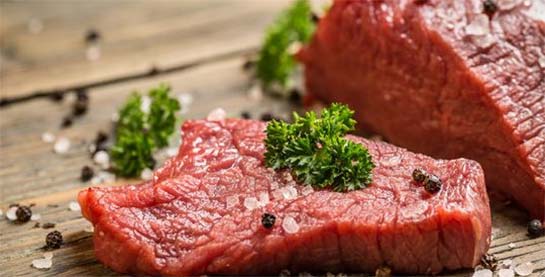The global beef industry is going through some major changes relating to trade flows, according to the Rabobank Beef Quarterly Q3 2017 report. Among other developments, Australia’s beef production is on the road to recovery, the US is dominating beef trade and Japan has introduced safeguard measures and increased the tariff on imported frozen beef.

After almost two years of decline, Australian monthly beef production volumes changed course, increasing by 11% and 20% year on year (YOY), respectively, for the months of June and July. Is this the start of the rebuild, with increases in export volumes to follow, and cattle and beef prices to ease, rebuilding Australia’s presence and competitiveness in international markets?
“While the decline in production has stopped, Australia’s ability to rapidly increase production – as has been seen in the US – will be limited, and a more gradual increase into global markets is expected,” according to Angus Gidley-Baird, an analyst for animal protein at Utrecht, Holland-headquartered Rabobank.
United States beef exports are up 11% YOY in volume for the year to July and up 15% in value terms. This highlights the ongoing availability of product for export from the US, as well as challenges in exporting from Australia and Brazil. Beef exports from the United States are up for the year to date to Japan (+22%), Hong Kong (+33%) and Canada (+5%). Australia has been restricted by availability of beef for export, while the “weak flesh” scandal in Brazil slowed exports of all proteins in 1H 2017. At the same time, the US has recorded stronger than expected beef imports, which are up for the year to date by 11%.
After reaching the trigger level, the Japanese government introduced safeguard measures and increased the tariff on imported frozen beef to 50%. This will impact all nations exporting to Japan, apart from Australia, Mexico, and Chile, which have trade agreements.
Argentina Seeks US Access
Argentina is trying to start shipments of fresh beef to the US. In August negotiations appeared to have taken a step closer to reaching an agreement when Argentina announced that it had opened its market to American pork products, showing that bilateral meat trade is under discussion. If Argentina is successful in gaining entry to the US fresh beef market, it will have access to a 20,000-ton beef quota.
Brazil Exports Recovering
After having declined by more than 8% during 1H 2017, Brazilian beef exports have shown a strong recovery during Q3 2017. In August of 2017 they reached their highest level in four years. Consequently, beef exports reversed the negative results and have already increased slightly for the first eight months of 2017. Moreover, Brazilian beef exports are likely to sustain volumes above 2016 levels during Q4 2017.
Positive Poultry Performance
Meanwhile, on the poultry front relatively strong results were recorded in second quarter of 2017, with significant increases in prices due to improved demand and supply restrictions.
“The industry is currently benefiting from improved market conditions after avian influenza (AI) pressure has reduced significantly, following the northern hemisphere winter months, even though it has not moved away fully,” said Nan-Dirk Mulder, Rabobank’s senior analyst for animal protein. “Relatively tight supply in the aftermath of the 1H 2017 ‘perfect storm’ caused by AI and the Brazilian ‘weak flesh’ meat scandal, is another positive for the global poultry industry. On the other hand, demand is recovering as AI has faded from the headlines.”
China has recovered quickly after the 1H 2017 AI crisis. Although new cases of human AI cases are still occurring (at a slower pace), demand recovery, together with very tight supply caused by GP import restrictions and environmental regulations, has shifted market conditions and lifted prices.
The Brazilian meat scandal has had a big impact on that country’s industry. Exports dropped sharply (down 9%) in Q2 2017, but gradually – partly with price concessions – Brazil has regained market share in global trade, with the latest monthly export figures matching last year’s record levels.





